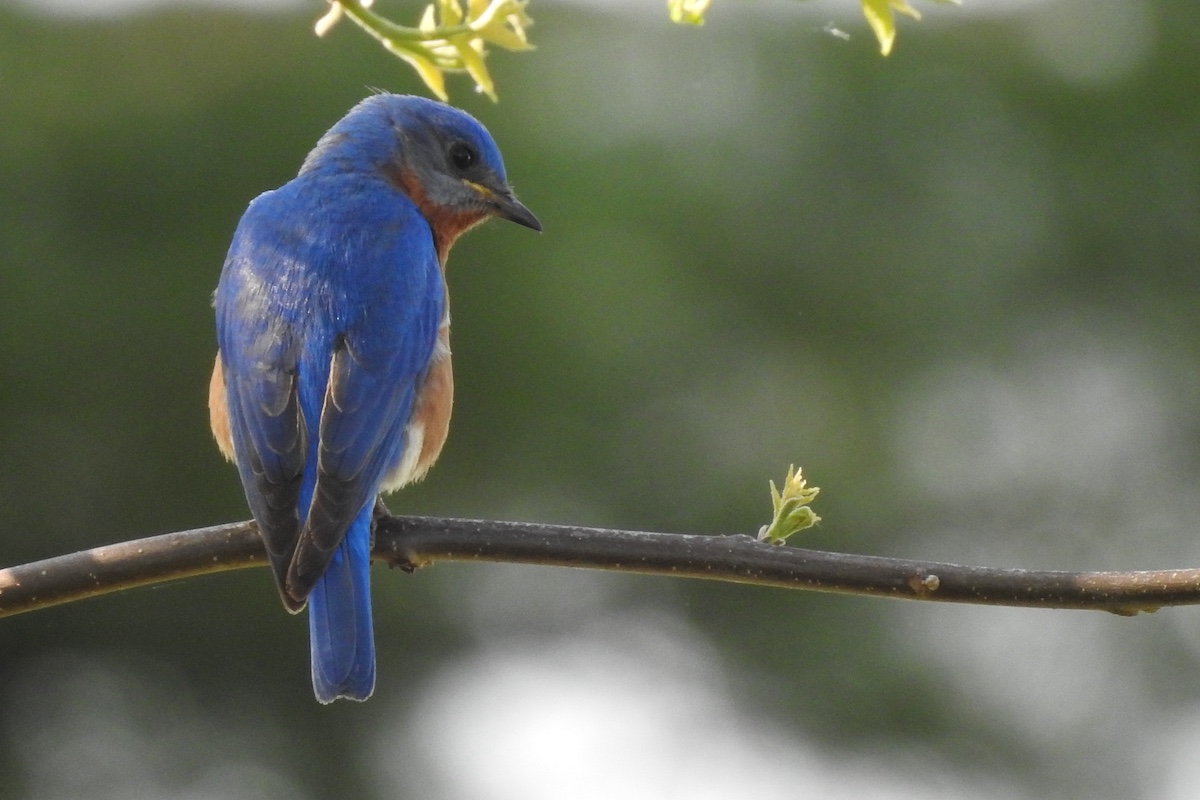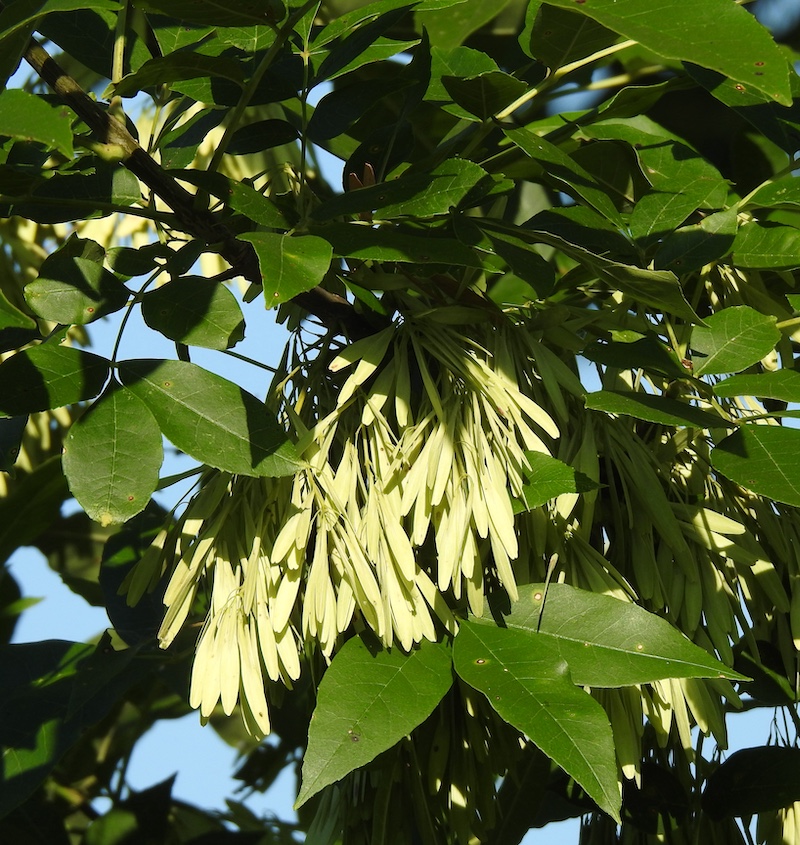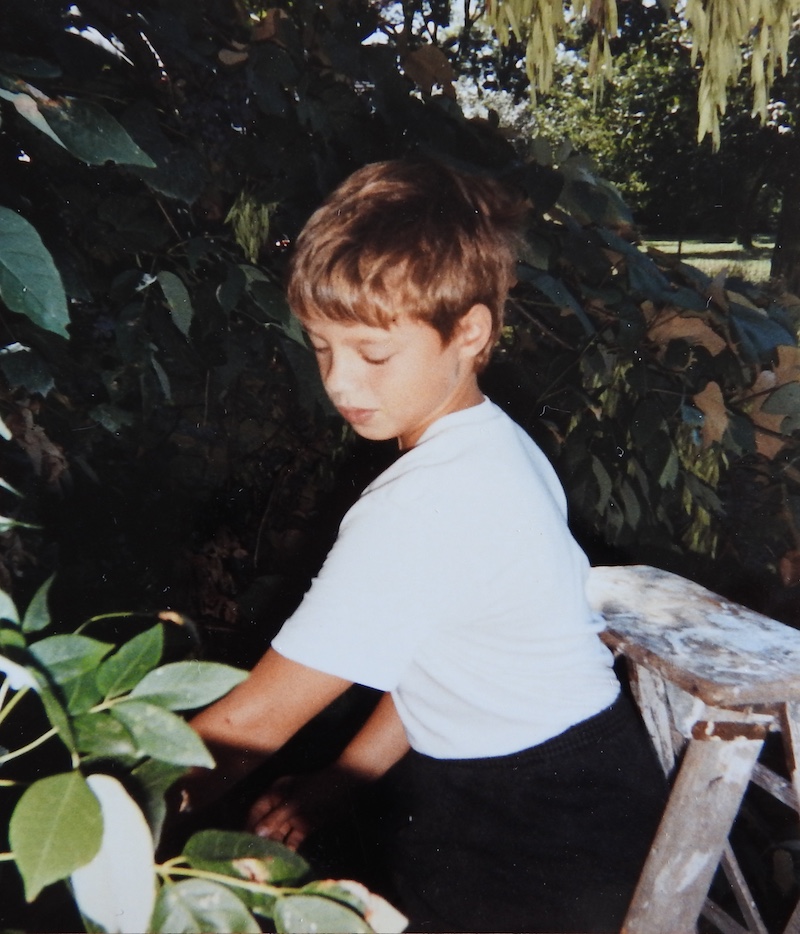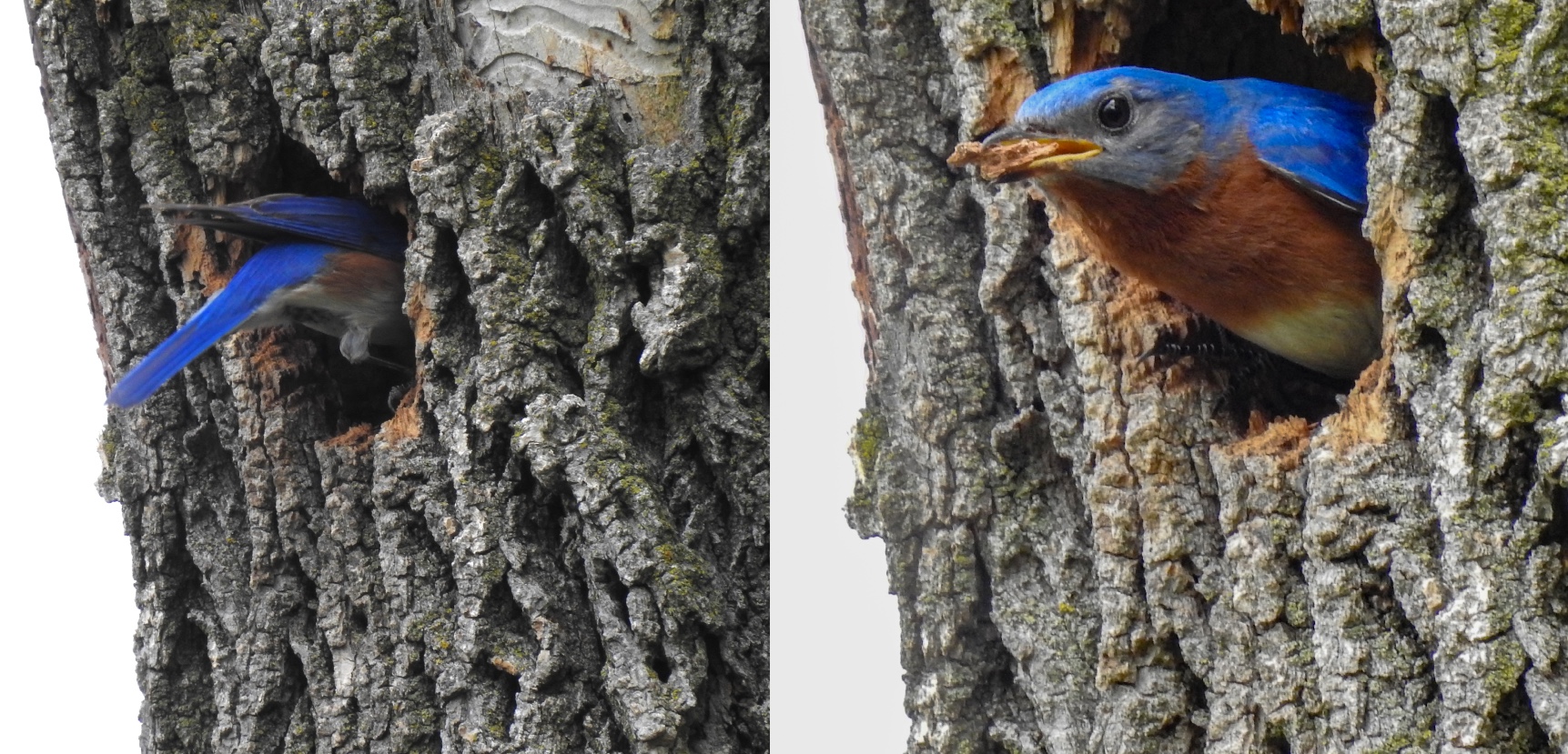
The sighting of a bluebird plunges the author into reminiscence. All photos by the author.



The sighting of a bluebird plunges the author into reminiscence. All photos by the author.
Walking across the yard of the old home site, I caught a glimpse of something blue amongst the leaves at the top of a shrub. Morning chores could wait; I had to investigate. I stood motionless – or tried to – and focused. Finally, a bluebird moved into my line of vision. It flew upward, landed and disappeared into a hole in the old snag.
“Snag.” No, that is not the word that I wish to use in reference to the tree of which I now speak. Doesn’t “snag” sound like a “snaggle-toothed old hag”? True, the tree’s trunk, without limbs, stands nearly devoid of bark, appearing pale and brittle, weathered and aged, and scarred.

Nearly 50 years ago the tree stood growing, reaching for the sky, well on its way to reaching its 80-foot potential. It was the typical green ash tree, Fraxinus pennsylvanica, yet it also was not. Characteristic were its glossy, dark green leaflets, finely serrated (toothed), lanceolate (spear-shaped), and arranged pinnately in compound leaves. In July, the hue of the tree seemed to change as clusters of lovely pastel green samaras bedecked the branches. Then, those paddle-shaped winged seeds turned beige, stirred in the wind and scattered widely. Each fall the vivid yellow of the ash tree’s foliage rivaled a sugar maple’s colors.
Yet, unlike most ash trees, this tree’s lowest limbs projected nearly horizontally around its trunk, positioned about 4 to 5 feet above the ground. When my first child discovered that unique feature of the ash tree, he found a challenge. He would stretch his arms, jump to catch hold of one of the lowest limbs, walk his little feet up the trunk, wrap his legs around the limb, and eventually maneuver himself into a proud stance. “Oh, you are perched precariously,” I’d say. He’d smile.
While the little boy was so perched upon a limb, the tree would reveal its life: ants scurrying up and down its trunk, abandoned cicada exoskeletons posing for examination, a house wren scolding, etc. Or, perhaps the tree would encourage a moment of contemplation. Then the child might envision himself a hidden mountain lion, watching for prey. Or, he might be the captain of a sailing vessel, studying the waves and sky.

Soon, the little boy’s agility increased; with a little jump, he’d step from limb to limb. In the shadowy world of the tree, the child considered himself secluded and veiled; yet, importantly, he could see me and I, him. The tree grew and so did the child and the family.
Soon a little brother became similarly engaged in play at the tree, but modifications were in order. Wooden planks, found stacked in the old barn’s feedway, were dragged and positioned upon the lowest limbs. Thus, Willy Wonka’s chocolate factory began production.
When a grandfather proposed the building of a treehouse, the offer was declined. “No, that might hurt the tree,” the boys said. So, beside the tree, within the reach of its shade, a small, roofed balcony upon tall 4×4 wooden posts was erected, instead.

When a little sister came along and began her play at the ash tree, its horizontal limbs often formed the main floor of her lovely two-story home, the balcony being “up high where birdies fly.”
One day at the ash tree when the robins were raising a ruckus, the child called, “Come see!” The whole family, even Daddy, watched with fascination as a “black rat snake” (now termed gray ratsnake) climbed nearly vertically using the interlacing ridges and deep furrows of the bark as footholds, so to speak.
For the children, the ash tree provided a safe, comfortable place. The tree conjured their imagination, encouraged observation and stirred their curiosity. For me, the ash tree was a cohort of sorts in the endeavor to raise healthy children.
Then came one spring when the upper branches of the ash tree did not leaf out. I knew the dieback pointed to a decline in the tree’s health. I feared the cause was an emerald ash borer infestation. Upon research, I found that the larvae of the emerald ash borer (Agrilus planipennis fairmaire) feed by tunneling through the wood just under the bark, and in so doing, the larvae damage a tree’s ability to transport nutrients and water. An infestation can bring about the death of a tree within just a few years.
Our ash tree died.

As I stood in the yard of the old homesite and watched the eastern bluebird, I saw the bird pass through a hole in the trunk of the dead ash tree. When it reappeared at the hole, it held a bit of something within its beak. Repeatedly the bluebird entered and exited; apparently the cavity, probably originally made by a woodpecker. required modification before serving as a nest. Another bluebird perched nearby. Perhaps the mated pair would successfully incubate eggs within the cavity of the dead ash tree’s trunk. The tree would be a safe and comfortable place for the chicks. The tree would be a cohort of sorts in the bluebirds’ endeavor to raise healthy offspring.
For years, Patty Gillespie shared her enthusiasm for language and nature and got paid for it at a public school and at a nature center. Now she plays outdoors as often as she can and writes for the sheer joy of it.
Prześlij pytanie do autora